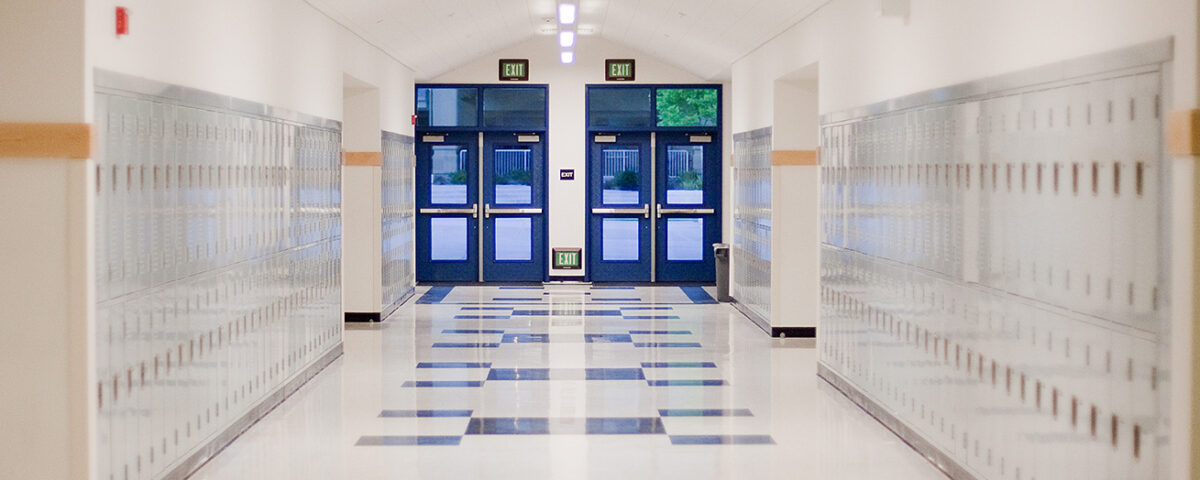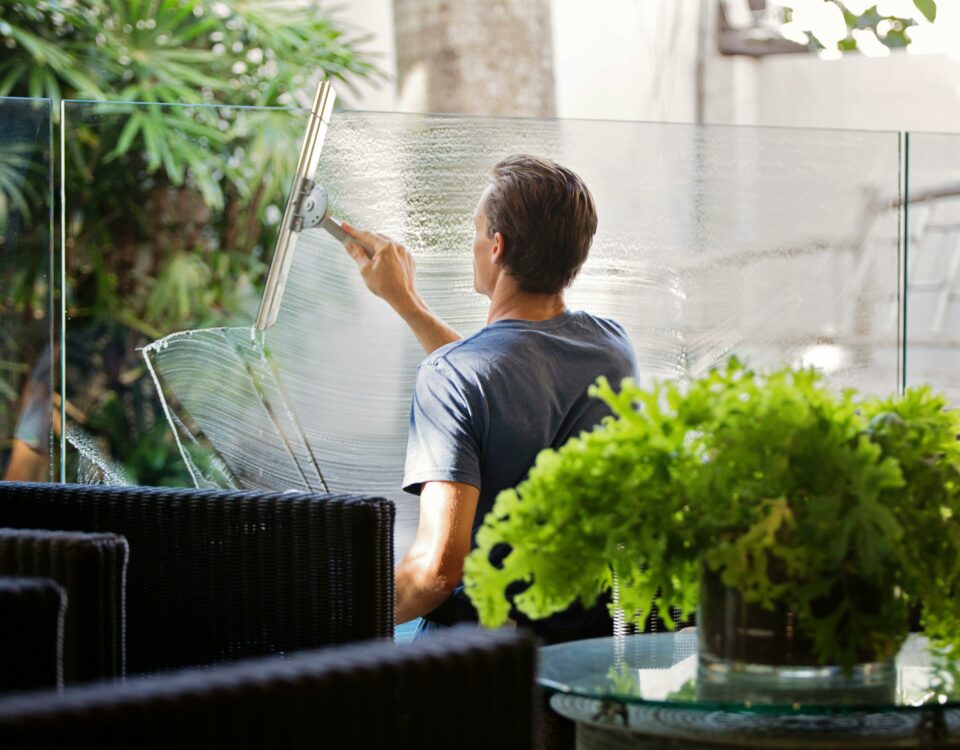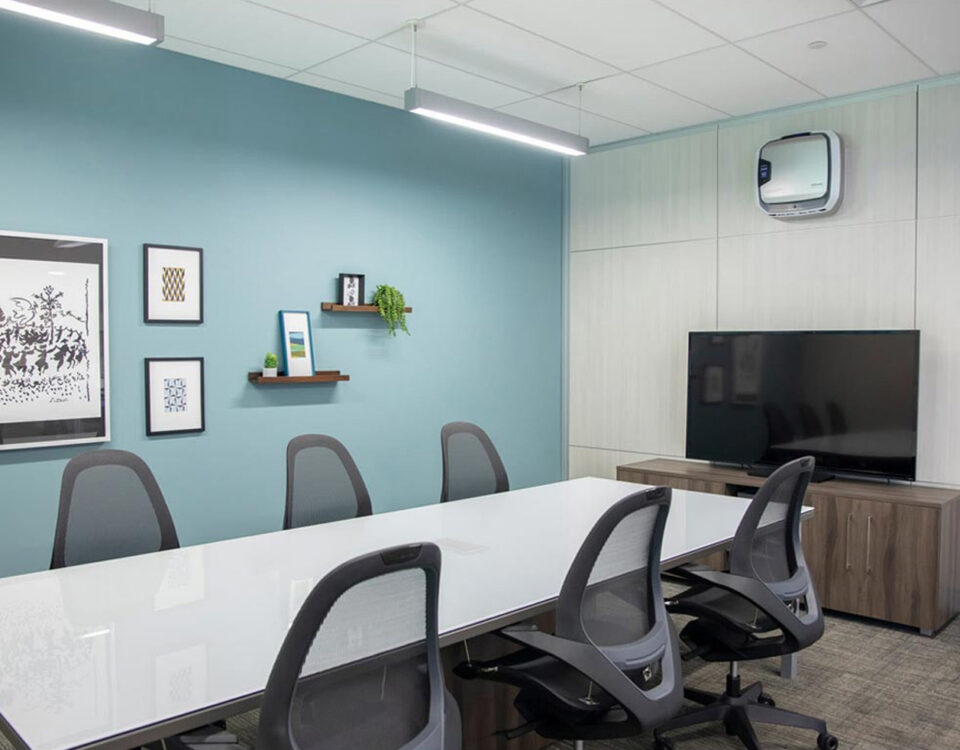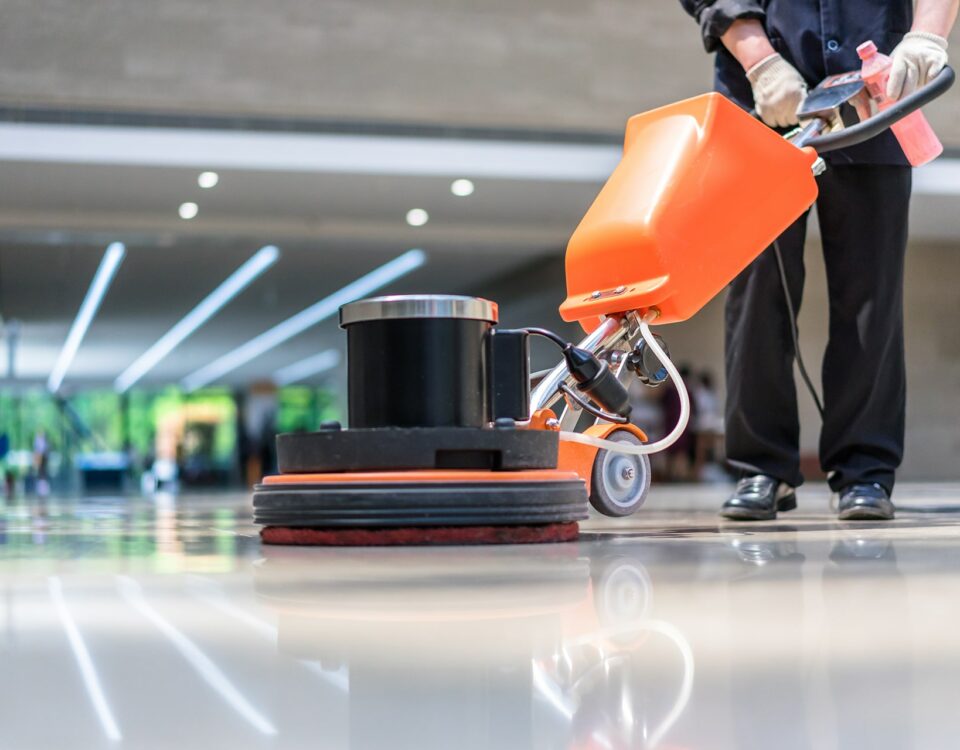Best Practices for School Floor Cleaning and Maintenance

Chill Out with Cool Coffee for the Breakroom
May 6, 2024
Design and Sell Your Own School Promotional Products!
May 28, 2024It’s no joke that school floors get put through the ringer. With heavy foot traffic from students and staff moving throughout the building, school flooring undergoes significant wear and tear, leading to increased risks of slips and falls, as well as the spread of germs and other pathogens. To ensure the health and safety of everyone in the building, proper care and maintenance of school floors is imperative, regardless of whether they are carpeted, concrete, wood, or something else.
Benefits from Floor Care and Maintenance
Multiple benefits arise from keeping school floors clean, including the creation of a safe and healthy atmosphere, providing a better learning environment overall, and prolonging the life of the flooring (which also means lowered costs). Not to mention properly cared for floors add to aesthetic appeal, which helps to improve the overall perception of your facility as a place that takes pride in providing a positive student learning experience and staff work environment.
Proper care and maintenance come from implementing best practices such as scheduling frequent deep cleanings, regular sweeping and mopping, using neutral pH cleaners, and avoiding harsh chemicals. They also come from knowing your flooring, and when it comes to schools, flooring is typically purpose specific – one type of flooring for entryways, one type for gyms, one type for classrooms…you get the picture. You don’t care for wooden flooring the same way you care for carpets and concrete. Each different type of floor comes with its own set of guidelines and protocols.
Frequency of Cleaning
The frequency of floor cleaning in schools depends on several factors, including the flooring type and foot traffic volume. No matter what schedule you decide upon, your protocol should include conducting random checks to ensure all cleaning and safety standards are met as well as scheduled deep cleanings at least once a quarter.
Above all, preventing slippery floor conditions should always take top priority. Spills should be cleaned up immediately to avoid slips and falls as well as staining or possible damage from chemicals.
At Guernsey, we take hygiene and safety seriously. In addition to our catalogue featuring hundreds of cleaning products, we offer a wide variety of janitorial and facilities programs aimed at helping our customers maintain a clean and safe school environment for all staff, students, and school visitors. These include:
- Equipment Repair
- Refurbished Equipment
- Equipment Rental
- On-Site Demos
- Training Programs
- Inventory Management
Carpets and Textured Floor Coverings
The upkeep of carpeted floors is crucial because properly maintained carpets can last for many years while simultaneously improving indoor air quality by removing dust and allergens. Regular removal of marks and stains from spillages caused by gum, mud, food, paint, and other fluids is a necessary daily task. If stains are not adequately removed by the daily cleaning process, they should be reported to a designated officer for further treatment.
Deep cleaning of carpets and mats should be carried out using an approved water extraction floor care machine and cleaning agents designed for textured floors. Prior to using water extraction, carpets must be vacuumed thoroughly. Be careful to use only manufacturer-recommended detergents and stain removers (and use them at the correct water temperature).
Here’s a small sample of carpet cleaning products from our catalogue:
- 12 Gallon Carpet Extractor
- ProGuard 4 Portable Wet/Dry Vac
- Task Vac Bagless Lightweight Upright Vacuum
- Peerless Multi-Purpose Stain Remover And Carpet Spotter
- Lx-Plus Carpet Extraction Cleaner
- Bonnet Carpet Shampoo
Hard Floors
When it comes to hard floor surfaces, you want to keep them free of unsightly markings, excessive scratches, and unappealing build-up of floor dressing (and, in the case of kitchens and cafeterias, free of grease and other foodstuffs). Any discolored or ingrained floor dressing that has lost its shine should be removed with an appropriate method, followed by a thorough chemical cleaning of the floors. Only approved cleaning products should be used and in accordance with the manufacturer’s guidelines.
Before applying a new floor dressing, make sure any new floor dressing is compatible with the existing dressing AND the previous polish is completely removed and the floor chemically cleaned and prepared. It’s crucial that you use approved chemical products and follow the manufacturer instructions.
To prevent build-up from dirt generated by buffing, the edges of hard floor surfaces must be wet mopped to prevent dirt build-up caused by buffing. Wax polish dressing should never be used in re-treatment of floor surfaces.
Please note that floors with non-slip properties should never be treated with floor dressing, as it poses a real risk of injury.
Here are a few items to get you started:
- Guernsey Workplace Solutions No-Rinse Floor Cleaner
- 33 Quart Mop Bucket With Sidespress Wringer And Divided Well
- Invader Side-Gate Wood Wet-Mop Handle
- Microfiber Looped-End Wet Mop Head
- Dry Mopping Kit
- 17″ Brute Force 175Rpm Low-Speed Floor Machine
- Choremaster Series 1400 Psi Pressure Washer
- Polishing Floor Pads
Floor Mats
Floor mats are also an effective tool to maintain clean floors, trapping dirt and debris that hitch rides on the bottom of shoes and acting as the first line of defense against health and safety hazards trying to sneak in through the floor door (or any other door, for that matter). Place floor matting in strategic locations such as entryways and you already lessen the number of pathogens and safety hazards coming through your doors and tracked around your facility.
Floor mats are certainly worth the investment, especially when you consider that slips, trips, and falls often stem from slipping on wet surfaces upon entering a building, which can result in numerous types of injuries. In fact, according to the CDC, one out of five falls causes a serious injury (such as a broken bone or a head injury). Walk-off mats, when installed and maintained properly, can reduce the chance of slipping by 80% or more.
Keep in mind, floor matting also requires proper care and maintenance. To preserve their usefulness and lifespan, they should be swept, vacuumed and spot cleaned often.
Hallways, Classrooms, and Entranceways
Generally, it’s recommended to sweep and dust mop daily (with nightly wet mopping), especially in high-traffic areas such as hallways, classrooms, and entranceways. Other daily tasks like vacuuming and spot treatments can be undertaken either early in the morning or after the school day ends.
Because of the need for proper ventilation, activities such as scrubbing and burnishing should be done over weekends or over breaks. Same with stripping and refinishing (which are also best done in spring or summer, once the need for items like chemical-laden ice melts are put away for the season). Other longer floor procedures, such as hot water extraction (which removes deep-down soil and residue), should also be undertaken over weekends, holidays, and summer breaks, allowing proper time for treatment and drying.
Kitchens and Cafeterias
When it comes to kitchens and cafeterias, proper degreasers and cleaners are a must, and these areas should be cleaned daily to prevent tracking anything unsavory and slippery into the rest of the facility.
Restrooms and Locker Rooms
Restrooms and locker rooms are a hotbed of pathogens, especially for bacteria like the life-threatening Methicillin-resistant Staphylococcus aureus (MRSA). Germs congregate and propagate here quickly and easily, which is why, as with kitchens are cafeterias, great care must be taken daily to keep these spaces properly sanitized and thoroughly cleaned. Check out our full list of restroom and locker room cleaning supplies here.
Cleaning Products and Tool Maintenance
Proper floor care and maintenance relies on the right products, machines and tools. To ensure the protection of school floors, any sealing or floor dressing, such as polish, should be applied using approved products and following manufacturer instructions. This is especially true when it comes to specialized floors, such as those in sports halls and gyms.
Also, proper maintenance of your cleaning equipment is vital. This includes checking hoses for leaks and stoppages, cleaning debris trays, checking batteries, and cleaning and drying sponges and mops thoroughly before storing, etc.
Extra Tips
Another great way to ensure your floors stay clean? Make getting rid of trash easy. Put trash cans and recycling bins in handy and strategic places, such as high-traffic areas like by the front door, near restrooms, and next to cafeterias and breakrooms.
By implementing a good cleaning schedule, regularly inspecting your floors for damage, and providing the appropriate training for staff, you can ensure your floors stay in their best condition and your students and staff stay safe.
Our flooring experts at Guernsey can help you select the right tools and products to ensure proper school flooring care and maintenance. We also provide top-notch cleaning and maintenance services.




